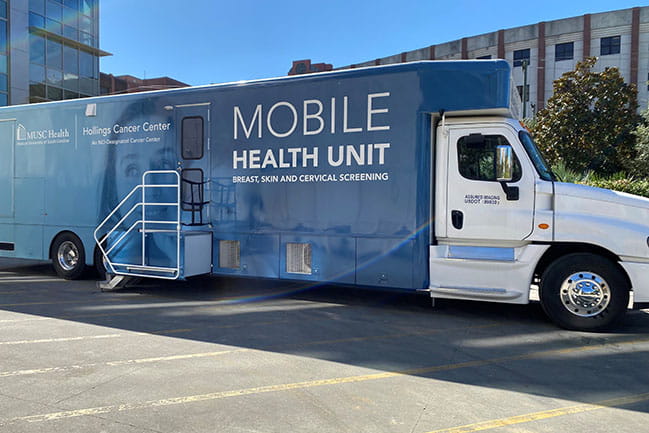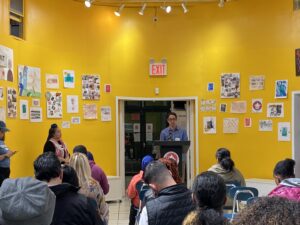In an era marked by abundant medical advancements, it’s easy to assume that access to healthcare is a given. However, the reality is far from equitable, with many communities and individuals facing significant barriers to essential medical services. Despite being a pivotal concern within public health discourse, health disparities often fail to capture widespread attention.
The statistics are sobering: Black Americans are 30% more likely than white Americans to die prematurely from heart disease, and twice as likely to die prematurely from stroke. Similarly, Native Americans face a 60% higher infant death rate compared to their white counterparts. These disparities persist across various healthcare needs, disproportionately affecting people of color and women.
Despite being a recurring theme in political discourse, little progress seems to have been made in addressing the accessibility, equity, and affordability of the American healthcare system. Implementing solutions like medicare-for-all will require decades, billions of dollars, and a degree of political cohesion not witnessed since the FDR era.
In this urgent context, there’s a clear need for practical and timely solutions to improve healthcare access.One promising approach is the expansion of mobile clinics, an increasingly common trend in New York City as healthcare facilities expand their services to underserved populations.
Understanding Healthcare Gaps
Understanding the complexity of healthcare access gaps is crucial to addressing them effectively. These gaps encompass a range of challenges, from geographical isolation in rural areas to economic constraints and language barriers in urban centers. The disparities not only affect individual health outcomes but also contribute to broader public health issues, perpetuating cycles of inequality and marginalization within these communities.
The evidence of these health gaps are long established, some highlighted examples include:
- Infant mortality for Black babies remains nearly 2.5 times higher than for white babies
- The life expectancy for Black men and women is nearly 10 years of life shorter compared with their white counterparts
- Diabetes rates are more than 30% higher among Native Americans and Latinos than among whites
- Rates of death attributable to heart disease, stroke, and prostate and breast cancers remain much higher in Black populations
Mobile clinics represent a dynamic approach to overcoming these barriers by bringing healthcare services directly to the doorsteps of underserved populations. These mobile units, equipped with essential medical equipment and staffed by qualified healthcare professionals, are uniquely positioned to navigate the complexities of healthcare access gaps with unparalleled mobility and flexibility. Whether stationed in remote rural towns or urban neighborhoods, mobile clinics offer a lifeline to individuals who would otherwise struggle to access medical care.
What are Mobile Clinics?
Mobile clinics are often converted vans, RVs, or trucks that provide essential, targeted healthcare services to underserved communities. The services offered are expansive, ranging from mobile mammogram services and needle exchanges and substance-use treatments to STI testing and sexual health services.
Increasing Access
One of the most notable benefits of mobile clinics is their ability to increase accessibility to healthcare services, particularly in areas where traditional healthcare facilities are scarce. By reaching remote and underserved communities, mobile clinics break down geographical barriers and ensure that individuals living in isolated areas have access to essential medical care.
Moreover, by eliminating the need for transportation, mobile clinics address one of the most significant obstacles to healthcare access faced by many individuals, especially in urban settings where access to reliable public transportation can be a challenge.
A recent example making headlines is the partnership between Dollar General, a prolific discount store with over 19,000 locations, and DocGo to deploy mobile primary care clinics in their parking lots. Dollar General stores are often found in rural locations, where healthcare choices are few and far between. These clinics offer services in towns that often lack primary care physicians entirely, providing an essential service affordably and reliably.
Targeted Outreach
Another significant advantage of mobile clinics is their ability to conduct targeted outreach, tailoring healthcare services to the specific needs of diverse populations. Whether providing culturally sensitive care to immigrant communities or offering language interpretation services for non-native speakers, mobile clinics foster trust and understanding between healthcare providers and the communities they serve. By building rapport and engaging with local populations, mobile clinics not only address immediate healthcare needs but also contribute to long-term improvements in community health and well-being.
Moreover, mobile clinics often serve as the sole healthcare option for unhoused populations outside of emergency rooms and can be relocated to areas of highest need. This flexibility allows for targeted programs like substance use outreach clinics, offering services such as clean needle distribution, overdose-reversal medication like Narcan, and facilitating connections with social workers to support individuals on their journey to sobriety.
Cost-Effective and Rapid to Deploy
Importantly, mobile clinics are cost-effective, delivering essential healthcare services in resource-constrained settings. With significantly lower overhead costs compared to traditional facilities, mobile clinics represent a financially sustainable model for healthcare delivery. By prioritizing preventative care and early intervention, these clinics help reduce long-term healthcare expenses by addressing health issues before they escalate into costly medical emergencies.
Beyond direct medical care, mobile clinics play a crucial role in enhancing public health outcomes. These units are uniquely positioned to respond rapidly to outbreaks and emergencies, providing timely medical interventions to those most in need.
Furthermore, through vaccination campaigns, preventive screenings, and health education initiatives, mobile clinics contribute to broader public health efforts aimed at reducing the burden of preventable diseases and improving overall community health. We saw the benefits of mobile clinics during the COVID-19 pandemic, where mobile testing and vaccination vans were parked on nearly every corner of Manhattan.
Challenges and Looking Ahead
Despite their numerous benefits, mobile clinics face numerous challenges and considerations that must be addressed to maximize their impact. Resource limitations, funding constraints, and regulatory hurdles all pose significant obstacles to the widespread adoption and scalability of mobile clinic initiatives.
Addressing these challenges will require collaborative solutions from stakeholders across sectors, including government agencies, healthcare providers, philanthropic organizations, and community leaders. The majority of mobile clinics are paid for by non-profits and philanthropic groups, but there are significant opportunities for city governments and local hospitals to develop their own mobile clinic services.
Looking ahead, mobile clinics hold promise for further innovation and expansion in healthcare delivery. With ongoing technological advancements and evolving healthcare delivery models, mobile clinics have the potential to play an even greater role in closing healthcare access gaps and ensuring that all individuals have access to quality medical care. By continuing to support and invest in mobile clinic initiatives, we can drive progress and create a more responsive healthcare system that is accessible to all, regardless of geographical location or socioeconomic status.






 Public Works Partners is a WBE/DBE-certified urban planning and consulting firm. Our expertise lies in creating innovative, equitable, and sustainable solutions to complex problems.
Public Works Partners is a WBE/DBE-certified urban planning and consulting firm. Our expertise lies in creating innovative, equitable, and sustainable solutions to complex problems.